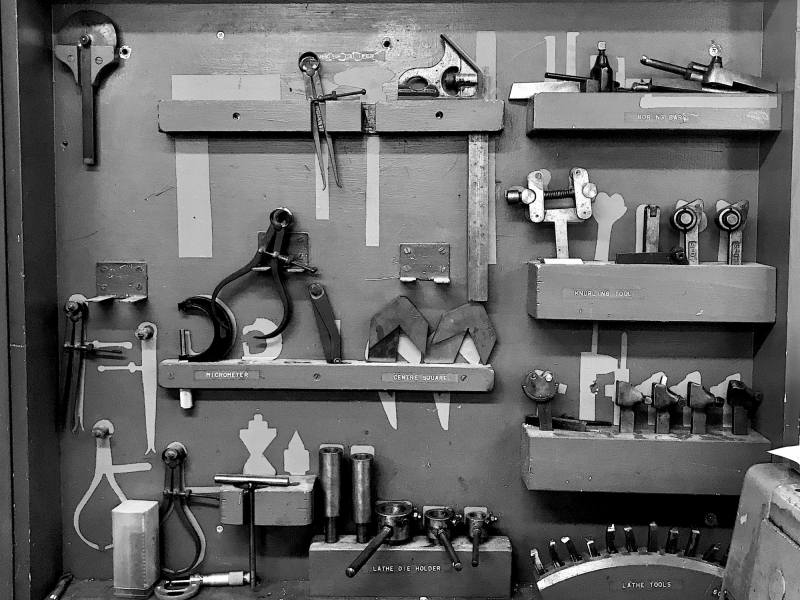Useful Links
01 August 2020

The Institute of Making team is taking a break in August but we have put together a list of useful links and resources that might be helpful, if you are wanting to make something over the summer.
One of our favourites of all time is Instructables - an extensive library of tutorials made by the maker community. When you are thinking about making anything, Instructables is a great first step to find out what others have already done and think about designs, processes and materials.
Laser Cutting
If you need to laser cut something, keep in mind that there are plenty of laser cutting services available in London. To use them, you will have to create your design by using a vector-based software such as Illustrator or Inkscape. If you want to learn how to use these softwears, try these links for using Illustrator and using Inkscape.
Illustrator is the software that we mostly use at the Institute of Making and Inkscape is an open-source alternative, but you can potentially use others. Just make sure you can export a vector file in a format that will be accepted by the laser cut service you are intending to use.
Laser cutting services are everywhere in London, so you might want to try finding one in your area to reduce delivery cos. We have used both 4D Modelshop (in Algate) and Cut Laser Cut (in Camberwell) and would happily recomend them.
Finally, if you want to be ready for our laser cut induction, have a look at our laser guide here.
3D Modelling
If you want to use 3D printing or CNC services, you have to 3D model your design and/or use a 3D model library.
One of the easiest software to learn to 3D model is Tinkercad, but if you want to progress into a software with more possibilities, we recommend you to try Fusion 360. If for some reason Tinkercad or Fusion 360 are not for you, have a look at other software such as Sketch Up, Rhino, Blender, Catia, SolidWorks and many more. Keep in mind that there are a lot of free online resources that will help you familiarise yourself with these software (see the section below rergading online learning).
Have in mind that sometimes the object or part that you are trying to 3D model might already be accessible online, ready for you to download and customise. Have a look at websites such as Thingiverse, GrabCad, My Mini Factory or Pinshape for example.
3D Printing
3D printing is a fairly accessible service in London. There are many different types of 3D printing. The most common and often cheapest type (like that we have at the Institute of Making) is known as Fused Filament Fabrication (FFF) or under the trademarked term Fused Deposition Modelling (FDM). Other types might be more relevant to you depending on your design, budget, appearance, mechanical requirement, material etc.
Make sure you know what kind of 3D print you are looking for before asking for a quote, though some service may be able to advice what is most suitable if you are unsure. Here is an interesting article explaining the different types of 3D printing technologies here.
Services we have used in the past and would recomend are Additive for SLS nylon and SLA resin prinitng, iMakr for FFF/FDM and SLA resin services. If you want to prepare/slice your model for a 3D printer, we recommend you to learn how to use Cura here.
Finally, if you want to be ready for our in-house 3D printing induction, have a look at our guide here.
CNC Milling
If you need to use a CNC machine, you will have to prepare a 2D vector file (see laser cut) or 3D model (see 3D modelling) depending on your design. Most of the CNC services will be able to provide the material you need, so you should only have to send your design and specify the material you need to receive a quote. CNC milling can be expensive, so it is a good idea to request a few quotes and compare before choosing your supplier.
If you plan to use our CNC in the future, there is a great course called “Introduction to CAD, CAM and Practical CNC Machining” that we particularly recommend. It will teach you how to use Fusion 360 to model your design and introduce you to the art of creating toolpaths for a CNC machine. You can access it from the Autodesk Academy or from Coursera.org
Online Learning
If you want to learn anything else, how to use a new software for example, remember that UCL gives you free access to online learning platform such as Linkedin Learning (previously called Lynda) and Coursera. Autodesk Academy is another free access platform to learn about 3D modelling, CNC toolpath, Simulation Analysis and more.
Other Useful Links
MakerCase is the best way for quickly designing boxes or project cases for laser cutters and CNC routers.
Fritzing is a great open source tool for anyone to teach, share, and prototype their electronic projects. It allows you to design a schematic, and thus a part, which can then be added to very professional-looking wiring diagrams. You can even design your own PCBs and have them fabricated from the files you design.
Price Runner is a useful comparison website to find out the cheapest place to buy tools, materials and more.
And Finally...
Don’t forget the joys that YouTube, Vimeo, Institgram and other video platforms can provide for discovering makers, learning remotely and seeing terrific processes performed. For example, here is an extraordinary noodle making video, and great demo on how to throw a pot, an insight into the wonders of gold leaf and a look inside a bell foundry.